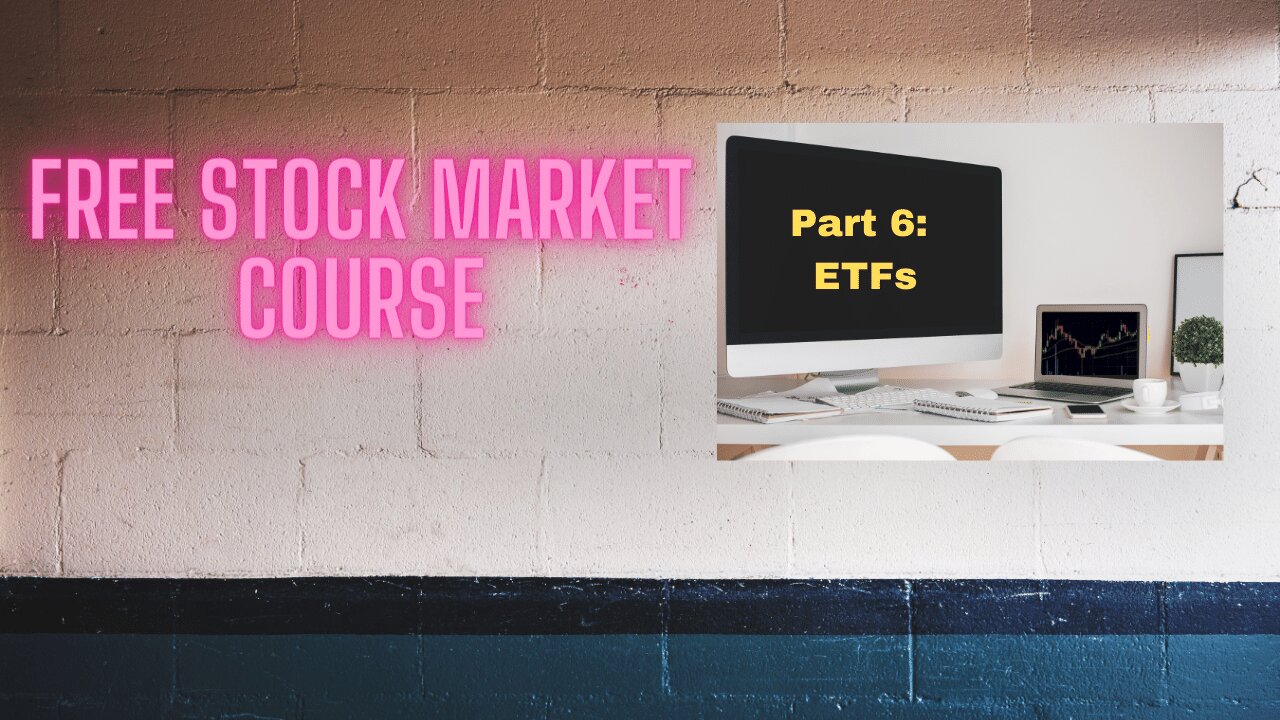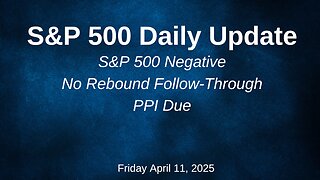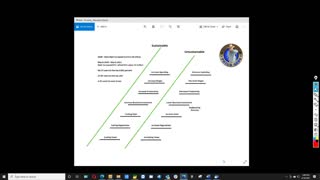Premium Only Content

Free Stock Market Course. Part 6: ETFs
Free File downloads
Course notes, Audio files, Assessments, Transcript files, and Course Outline: https://spxinvestingblog.com/downloads/
My Exclusive Free Workshop: The Four P's of Building a Successful Investing Program → https://spxinvesting.mailchimpsites.com
Blog: https://spxinvestingblog.com
Facebook Group: https://www.facebook.com/groups/433843641082343
Recommended Reading: The Little Book of Common Sense Investing: https://amzn.to/3EQygql
Chapters:
00:00 What is an ETF?
02:36 Growth of ETFs
03:27 Top 10 Largest ETFs
04:34 High Flier ETF
05:31 ETFs and Mutual Funds
10:48 Cumulative Fund Flows
12:10 The SPY
14:39 ETF Average Volume
15:19 SPY Alternatives
17:29 A Warning about ETFs
19:59 Alphabet Soup
What is an ETF?
Module 2 Section 5
Exchange Traded Funds
ETFs are similar to mutual funds.
However, an ETF can be bought or sold just like a share of stock.
ETF transactions can take place during market hours.
Mutual Funds can, typically, only be entered or exited once per day. There are exceptions.
Index mutual funds were available in the 1970s. ETFs were created in 1993.
The SPY was the first ETF.
Since their inception, ETFs have grown to be very popular.
As of 2020, there were over 7,200 ETFs available.
ETFs are an excellent vehicle for new as well as seasoned investors.
ETFs and Mutual Funds
Similarities:
Diversification
Professional management
Index mirroring
Enhanced and Inverse alternatives are available.
Can be used in an IRA (double-check this with your financial professional)
Differences:
ETFs have a larger selection of Indexes than Index Mutual Funds.
Costs involve commissions to a broker rather than expenses paid to a mutual fund company.
ETF dividends or interest received are distributed each quarter, whereas index mutual funds immediately invest dividends or interest income.
Odd lot purchases or sales are easier with an index mutual fund than with an ETF.
It is easier to Dollar-Cost-Average with an index mutual fund than with an ETF.
Some ETFs may not be liquid. This can produce a higher Bid/Ask Spread as well as having a skewed balance.
ETFs must be purchased through a broker, whereas index mutual funds are purchased through a mutual fund company.
The SPY
The SPDR® S&P 500® ETF Trust seeks to provide investment results that, before expenses, generally correspond to the price and yield performance of the S&P 500® Index.
Ticker Symbol:
SPY
The SPY started trading on January 29, 1993.
More information can be found at www.spdrs.com
SPY Alternatives
The SPY tracks the SPX 1:1
Enhanced SPY ETFs (follow the volume)
ProShares Ultra S&P500 (ETF) 2X
Ticker Symbol: SSO
ProShares UltraPro S&P 500 (ETF) 3X
Ticker Symbol: UPRO
Inverse SPY ETFs (follow the volume)
ProShares Short S&P500 (ETF) 1X
Ticker Symbol: SH
ProShares UltraShort S&P500 (ETF) 2X
Ticker Symbol: SDS
ProShares UltraPro Short S&P500 (ETF) 3X
Ticker Symbol: SPXU
Direxion Daily Large Cap Bear 3X Shares
Ticker Symbol: SPXS
A Warning About ETFs
There has been an explosive growth in the number of new ETFs available.
When anything sees growth at almost manic levels, this can often mean some sort of bubble is forming or has already formed.
The SPY and various index ETFs “should” be just fine.
The warning concerns new ETFs that seem to appear overnight.
The “vetting” needed to create a new ETF has been decreased.
A lack of liquidity, as well as the “soundness” of the company bringing a new ETF to the market, should be examined.
Tax implications should also be examined.
Alphabet Soup
There are many acronyms that require Members to be familiar with:
ETP: Exchange Traded Products
Those most popular ETPs are ETFs.
ETN: Exchange Traded Note
More like a bond
ETV: Exchange Traded Vehicle
Futures, Commodities, and Currencies
The ETP field is growing rapidly, with changes occurring frequently. Investors and traders need to keep informed about new products, opportunities, and strategies.
-
 1:01:10
1:01:10
The SPX Investing Program
6 days agoS&P 500 Daily Update for Friday April 11, 2025
56 -
 4:19
4:19
Fanatical Finance
3 years agoUnderstanding the Stock Market Part 2! | What is the Stock Market?
715 -
 8:17
8:17
The Phil's Gang Radio Show Channel
3 years agoStock market crash starting to unfold part 22
65 -
 8:51
8:51
The Phil's Gang Radio Show Channel
3 years agoStock market crash starting to unfold part 16
31 -
 8:24
8:24
The Phil's Gang Radio Show Channel
3 years agoStock market crash starting to unfold part 15
17 -
 7:29
7:29
The Phil's Gang Radio Show Channel
3 years agoStock market crash starting to unfold part 14
40 -
 7:06
7:06
The Phil's Gang Radio Show Channel
3 years agoStock market crash starting to unfold part 13
20 -
 LIVE
LIVE
Sean Unpaved
56 minutes agoAaron Rodgers' Reflects On The Future, Playoff Showdowns & Ice Battles Begin!
635 watching -
 LIVE
LIVE
Tim Pool
1 hour agoKarmelo Anthony Debate: Use Of Force & Murder | The Culture War with Tim Pool
21,228 watching -
 LIVE
LIVE
Benny Johnson
2 hours ago🚨BOMBSHELL: New Trump Assassination Plot Revealed! Assassin Would 'Bomb' Trump, Escape to UKRAINE
7,633 watching